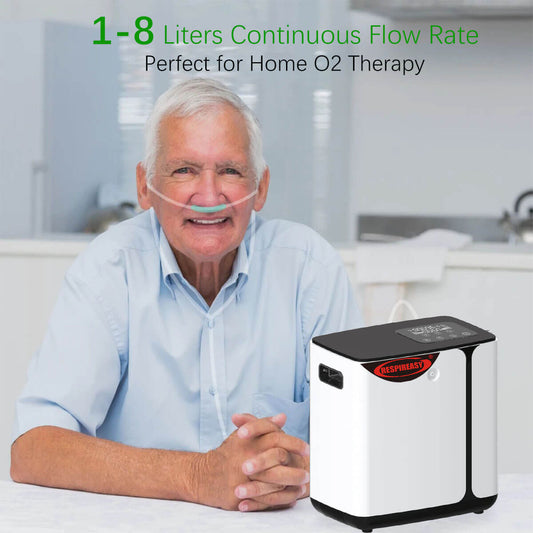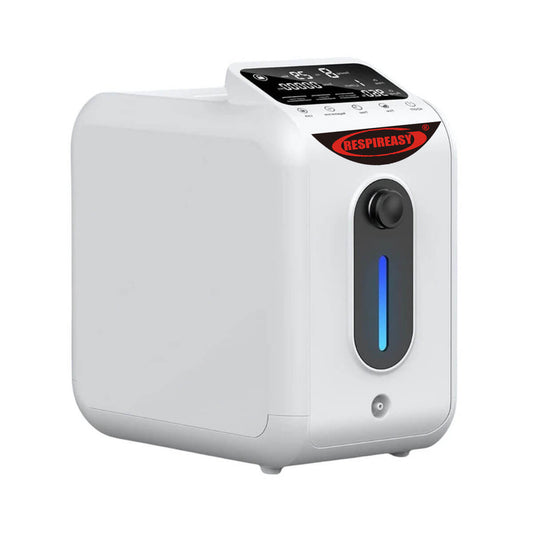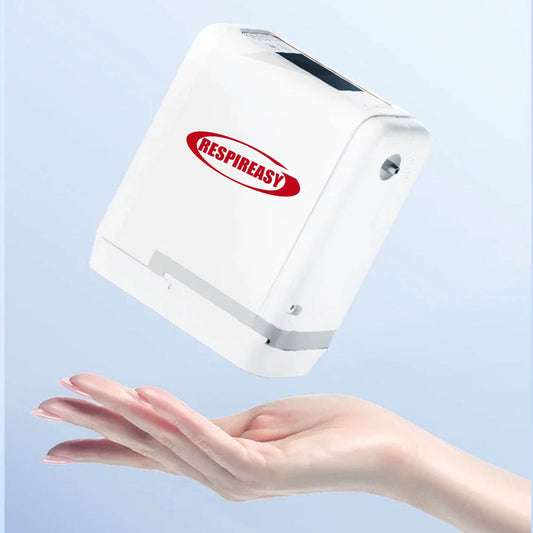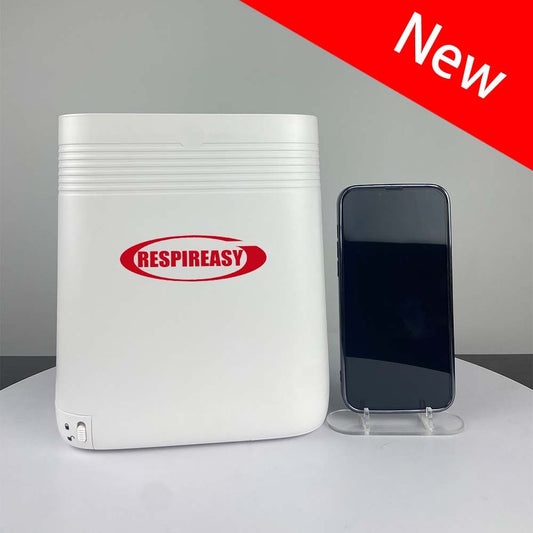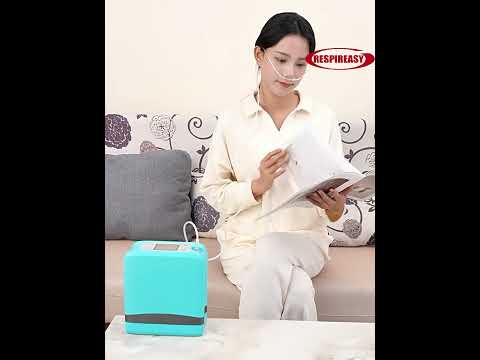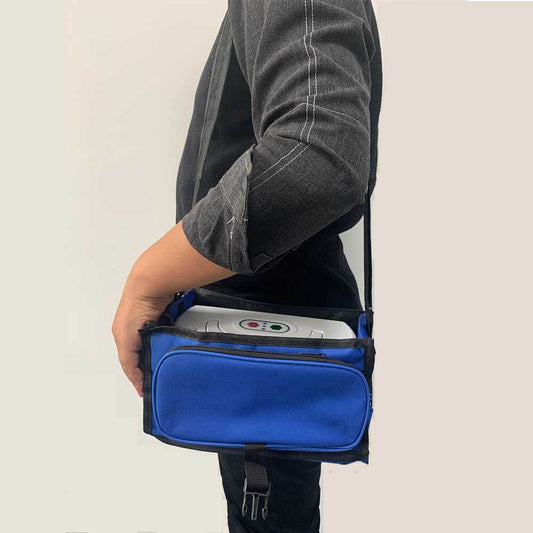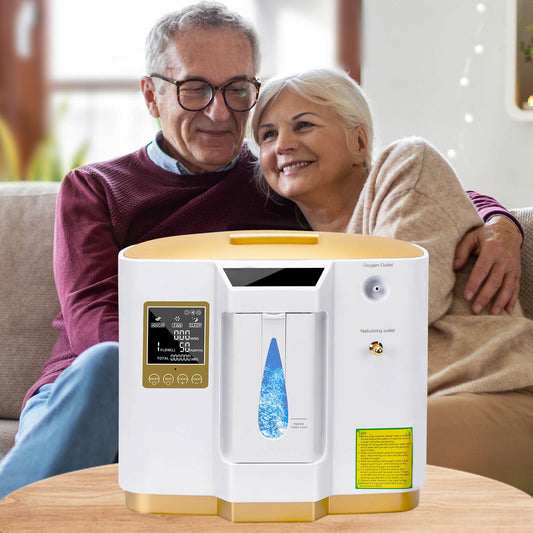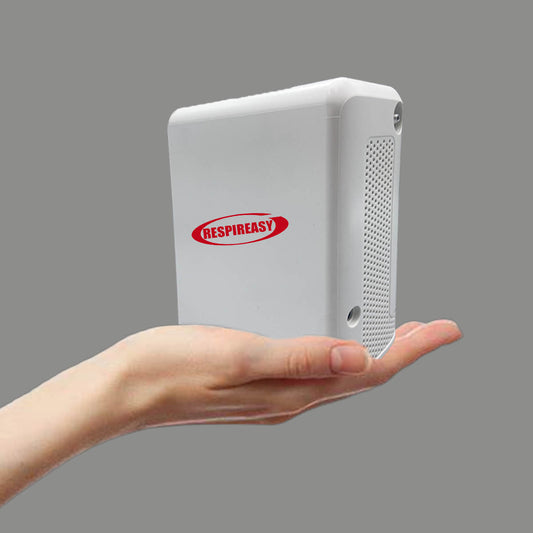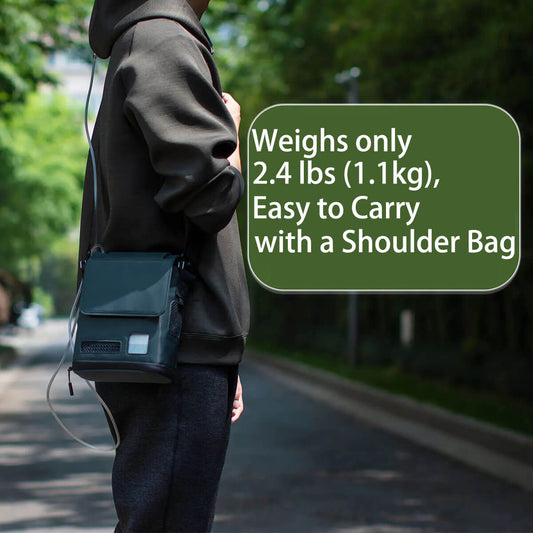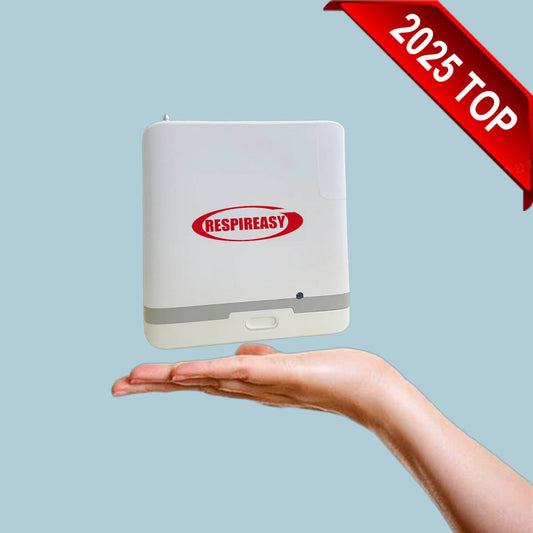FAA Approved Portable Oxygen Concentrator
Portable oxygen concentrator FAA approved
All FAA-approved portable oxygen concentrators (POCs) have a manufacturer's label indicating that the device is FAA compliant.
Some airlines carry their own therapeutic oxygen equipment on board, some allow passengers to carry POC oxygen equipment and use it during the flight, and others restrict the use of any type of oxygen equipment on board.
It is the responsibility of both the passenger who intends to use the POC on the aircraft and the operator of the aircraft on which the POC is to be used to determine whether the POC meets the FAA acceptance criteria before flying.
POC with FAA manufacturer's label
Passengers and aircraft operators can determine if a POC meets the acceptance criteria by visually inspecting the equipment to find the manufacturer's label indicating compliance.
POC without FAA manufacturer's label.
If equipment is not marked as required, passengers and aircraft operators can determine compliance by stating the manufacturer and model designation and confirming the presence of the POC in the equipment list contained in §§ 121.574, 125.219 and 135.91.
Are all portable oxygen equipment suitable for travel with oxygen?
Many airlines allow patients to take portable oxygen concentrators on board at no additional cost as long as they are on the FAA (USA) POC list.
- Liquid oxygen is prohibited on commercial routes; the only aircraft permitted to carry or use liquid oxygen are helicopters used as air ambulances.
- Improper transportation of liquid or compressed oxygen can pose a significant safety risk and result in severe civil penalties for operators.

The Department of Transportation's (DOT) Final Rule "No Disability Discrimination in Air Travel" requires air carriers to use respiratory equipment on board aircraft.
In the final rule of DOT, Section 382.133 generally requires:
Passenger airlines must allow people with disabilities to use FAA-approved Portable Oxygen Concentrators (POCs) on all flights (on aircraft originally designed to carry more than 19 seats). The device must comply with the FAA requirements for medical portable electronic devices (M-PED) and have a manufacturer's label indicating that the device complies with these FAA requirements.
FAA Acceptance Criteria for Portable Oxygen Concentrators
Instead of continuing to approve POCs on a case-by-case basis, the FAA has established acceptance criteria for POCs used on aircraft. Standard:
- POC is legally sold in the United States in accordance with the requirements of the US Food and Drug Administration (FDA) as described in Title 21 of the Code of Federal Regulations (21 CFR).
- The POC does not emit RF interference that interferes with aircraft systems.
- POC does not produce compressed gas.
- The POC does not contain any dangerous substances (dangerous goods) except for the batteries used to power the PED as specified in 49 CFR Part 175 Section 175.10 and does not require an aircraft operator's permit for transport, some larger batteries are the situation.
Mandatory POC label.
All POCs that meet the eligibility criteria and are not previously listed in SFAR 106 must also be marked with the following red color:
"The manufacturer of this POC has determined that this device meets all applicable FAA acceptance criteria for the carriage of the POC and use on board aircraft."
The final rule, entitled "Oxygen and Portable Oxygen Concentrators for Passenger Medical Use," replaces the Federal Aviation Administration (Agency or FAA) process for approving portable oxygen concentrators (POCs) for use on aircraft operated by air carriers and certain other operations involving large aircraft. . The FAA evaluates each make and model of POC on a case-by-case basis prior to developing a rule development program, and if the FAA determines that a particular POC is safe for use on an aircraft, the FAA conducts rulemaking to determine the particular POC model in FAA Rules (SFAR 106).
The final rule replaces the previous process and allows passengers to use the POC on board an aircraft, provided that the POC meets certain eligibility criteria and has a label indicating it meets the eligibility criteria. The marking requirement only applies to POCs that have not previously been approved in SFAR 106 for use on aircraft. In addition, rulemaking eliminates redundant operational requirements and requirements for paperwork related to the statements of doctors.
As a result, rulemaking makes life easier for POC manufacturers, passengers traveling with POC, and affects aircraft operators. The final rule also contains incremental changes to the Department of Transportation's (Department or DOT) rules implementing the Air Carrier Access Act (ACAA), requiring carriers to accept all POC models that meet the FAA eligibility criteria detailed in the rules.
Is my portable oxygen concentrator approved by the airline?
Some airlines disclose the list of POCs and confirm that they can be used during the flight, or provide contact information to confirm if your device is allowed to be used.
When booking, airlines allow the use of POC or oxygen supply either for a fee or a separate fee. Airlines also require at least 48 hours notice prior to travel to ensure their use is approved. Some airlines limit the number of passengers who are allowed to use oxygen on an aircraft per flight.
It is highly recommended that you book your flight as early as possible and contact the airline immediately to begin the approval process. With most airlines, this can be done by calling, emailing or faxing their 'Medical Assistance Service' and completing the forms provided by each airline.
Each airline has its own in-flight oxygen policy.
Pulsed Flow FAA approved portable oxygen concentrator with a continuous flow of POC oxygen.
Continuous Flow
The continuous flow machine continuously releases oxygen whether the user inhales or exhales. Air compressors compress normal air and supply high pressure air to the oxygen system.
The oxygen system (PSA system) consists of two cylinders filled with molecular sieves.
It separates N2 and delivers O2. The more two cylinders, the more molecular sieves.
More molecular sieves require more compressed air. The more air is compressed, the larger the compressor and the more oxygen it can produce per minute. This is why large plants can produce 5 liters of 93% oxygen per minute. Because big cars have big compressors and big oxygen systems.
Some cheap small drinking water devices mix regular air with oxygen when you turn it on to make the flow in excess of 1 liter.
Impulse Flow
POC Pulsed Flow provides a "pulse" of oxygen with each breath. Whether continuous flow or pulsed flow, the oxygen enrichment process does not stop.
Pulsed flow machines make full use of a person's expiratory time.
The impulse stream has a storage system inside the machine. When people exhale, the storage system stores oxygen and stops delivering it. There is a sensor to detect people's inhalation movements. When a person inhales, the sensor is activated and delivers the stored oxygen.
The maximum power of the pulsed flow is three times the constant oxygen capacity. It doesn't matter how many settings this machine has. If an oxygen generator has a maximum output of 1 liter of continuous oxygen per minute and a purity of 90%, its maximum pulse flow rate is 3 L/min.
FAA Pulsed or Continuous Portable Oxygen Concentrator? What's better?
It depends on your recipe and budget.
There are several machines on the market that provide continuous and pulsed flow. These machines offer flexibility as they are ideal for use at night, use with sleep apnea devices, and pulse doses during the day.
The best solutions are those that keep you healthy and meet your needs.
Portable oxygen concentrators work by separating oxygen from the surrounding air from nitrogen and other gases in the air. Portable oxygen concentrators provide users with more than 90% oxygen. Store a small amount of oxygen for a short time. The POC can detect the user's breath and dispense oxygen (pulse technology) or supply oxygen to the user in a continuous flow.
Portable oxygen concentrator. FAS rules.
Passenger airlines must allow people with disabilities to use FAA-approved Portable Oxygen Concentrators (POCs) on all flights (on aircraft originally designed to carry more than 19 seats).
In the United States, airlines must allow passengers to use FAA-approved portable, battery-operated oxygen concentrators. The device must comply with the FAA requirements for medical portable electronic devices (M-PED) and have a manufacturer's label indicating that the device complies with these FAA requirements. The only FAA-approved oxygen equipment allowed to fly on board is the Portable Oxygen Concentrator (POC), a smaller, lighter, and more portable variation of the home oxygen concentrator. No other personal oxygen systems may be used on board,
A full oxygen cylinder (liquid or compressed gas) cannot be taken on a plane or even checked in as luggage with any airline. Some airlines may allow you to store empty oxygen equipment in your checked baggage, but you must make sure it is empty and the regulator must be removed.
Passengers are prohibited from carrying compressed oxygen and liquid oxygen on board. According to the HMR, equipment containing compressed or liquid oxygen must have a special identification label. Please contact your airline in advance to allow an empty tank check.
POC does not contain compressed oxygen, so does not require the same level of special handling as compressed oxygen, and is safe for aircraft use under certain conditions of use.
The FAA requires that the charge be sufficient for 150% of the trip length. You must also factor in the time it takes to travel to the airport, wait for boarding, stops, and travel from the airport to your destination upon arrival. Make sure you have enough battery power during the flight, including a conservative estimate in case of unexpected delays. If possible, fly directly. This eliminates the hassle of organizing the delivery of oxygen to the airport, which entails additional costs.
Arrive at the airport early and inform the conductor that you will be traveling with supplemental oxygen.
During a Transportation Security Administration (TSA) security screening, let them know that you cannot turn off supplemental oxygen and request an alternative screening process. While waiting to board your flight, you can save battery power by plugging your POC into an electrical outlet at the airport terminal.
FAA preflight requires passengers to carry portable oxygen.
Doctor's statement
Under Part 382 DOT rules, airlines may require a medical certificate from a passenger if there are reasonable grounds to suspect that a passenger with a disability can safely complete a flight without the need for special medical attention during the flight. In addition, air carriers may require a medical certificate from those who need medical oxygen during the flight.
The FAA does not require passengers to obtain a medical opinion and present it to the operator or aircraft commander (PIC) before using POC on board an aircraft.
All FAA-approved portable oxygen concentrators (POCs) have a manufacturer's label indicating that the device is FAA compliant.
Health care provider consultation.
The FAA does not require passengers to consult a physician before using POC on an aircraft.
However, the passenger and his or her healthcare provider may discuss the following:
- Influence of pressurized cabins (with an altitude of atmospheric pressure up to 8000 feet) on the oxygen demand of passengers.
- Due to cockpit pressure altitude, some POC users require higher liter flow or liters per minute (LPM) settings to install the POC in the air.
- Some POC users who occasionally use POC on the ground may need to use POC throughout their flight due to cabin pressure altitude.
- The passenger's POC needs during the trip and whether the passenger's needs have changed since the first POC was issued or the last consultation with a healthcare professional.
- Some key points in the POC operating manual regarding oxygen supply, indicators, warnings and alarms, and setting/changing the flow rate in liters or LPM. 4. All crew members (pilots and flight attendants (F/A)) are trained to deal with in-flight medical cases. However, the FAA does not require air carriers or flight attendants to provide medical care to passengers.
FAA uses portable oxygen concentrators during flight
Seating restrictions for passengers planning to use POC on board.
Exit rows of seats. The FAA prohibits anyone using a POC from occupying any seat in an exit row.
Storage during exercise. During ground movement (pushing off from the boarding gate and taxiing), takeoff and landing, the PDA must be properly stowed and not restrict passengers' access to any exits or aisles from the cabin. Additional seating restrictions may be required to comply with these FAA safety regulations.
For example:
- Some aircraft seats, such as bulkhead seats, may or may not have an approved cargo space for POC placement during ground movement, takeoff and landing. Therefore, if a POC user occupies these spaces, the POC may not fit.
- properly during these phases of flight. In this case, a limited number of seats are required to comply with FAA safety regulations.
- During ground travel, takeoff and landing, the tubes used to distribute oxygen from a properly stored POC to the wearer's mask/nasal cannula may restrict passenger exit or create a tripping hazard during evacuation.
- During these flight phases, POC users cannot restrict the departure of other passengers. In this case, seating restrictions may be required in accordance with FAA safety regulations. For example, if all seats in a row are occupied, a suitable seat for a POC user would be a window seat.
- However, if there are no other passengers in the row, or if there is another passenger in the row of three seats and the passenger is in an aisle seat, or if the POC is stored in such a way that the air duct cannot block the exit of other passengers, other passengers in a row of seats, if the exits of other passengers are not restricted by pipes.
- Carriers may place seat limits only in accordance with FAA safety regulations. The examples above represent some, but not all, of the scenarios that need to be considered. Operators must make safety decisions on a case-by-case basis before imposing seating limits.
- The general policy of the airline is that all passengers landing from a POC must take a window seat, regardless of the specifics of individual circumstances, which is contrary to the requirements of Part 382.





























